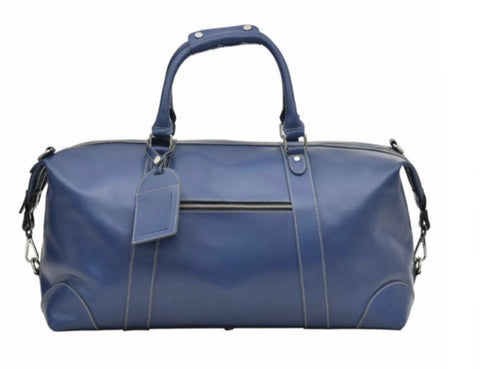The Tale of Leather: Natural Vegetable-Tanned vs. Chrome-Tanned

Leather has been a timeless material utilized for centuries across various cultures and industries. Among the diverse types available, two prominent methods of tanning produce distinct types of leather: natural vegetable-tanned leather and chrome-tanned leather. Both have unique characteristics, creation processes, applications in leatherwork, cost variations, and ecological implications.
Creation Process:
Natural Vegetable-Tanned Leather:
Natural vegetable-tanned leather is crafted using organic materials like tree bark, leaves, and other plant extracts. The process involves soaking the rawhide in tannins found in these natural elements. It's a traditional method that often takes a longer time (up to a few months) to complete, allowing for a more artisanal touch and depth of character in the leather. This technique is renowned for its ability to develop a beautiful patina over time, deepening in color and developing a unique look with age and use.
Chrome-Tanned Leather:
In contrast, chrome tanning employs chromium salts in the tanning process. It's a more modern, faster, and efficient technique, taking a significantly shorter time (usually just a day or two) to produce leather. The use of chromium salts results in a more uniform and supple leather, often in brighter colors, which might not develop the same patina as vegetable-tanned leather over time.
Leatherwork Projects:
Natural Vegetable-Tanned Leather:

Due to its ability to age beautifully and develop a rich patina, natural vegetable-tanned leather is often preferred for high-end leather goods like belts, wallets, saddles, and high-quality footwear. It's also favored by artisans involved in tooling, carving, and crafting intricate designs on leather due to its ability to hold impressions and shapes well.
Chrome-Tanned Leather:

Chrome-tanned leather's flexibility, softness, and resistance to water make it suitable for various applications, including handbags, upholstery, and garments like jackets and shoes. Its ability to take on vibrant colors easily also makes it popular in fashion and accessory industries.
Cost Difference:
Natural vegetable-tanned leather is generally more expensive than chrome-tanned leather due to its longer production process and reliance on natural materials. The craftsmanship and the aging process that adds value over time also contribute to its higher cost.
Ecological Advantages and Disadvantages:
Natural Vegetable-Tanned Leather:
Advantages:
- Environmentally friendly as it primarily uses natural substances.
- Biodegradable and less harmful at the end of its life cycle.
Disadvantages:
- Requires more time, water, and space in the production process.
- Relies on natural resources that might be subject to availability and seasonal variations.
Chrome-Tanned Leather:
Advantages:
- Faster production reduces resource consumption.
- Often cheaper due to the efficiency of the process.
Disadvantages:
- Involves the use of chemicals like chromium salts, which can be harmful to the environment if not properly managed.
- The byproducts might pose disposal challenges and potential environmental risks.
In conclusion, both natural vegetable-tanned leather and chrome-tanned leather have their distinct characteristics, making them suitable for different applications. While one boasts traditional craftsmanship and a unique aging process, the other offers efficiency and versatility. However, their ecological implications highlight the trade-offs between natural, time-consuming processes and modern, efficient methods that rely on chemicals. The choice ultimately depends on individual preferences, project requirements, and considerations for ecological impact.
*Leather handbags presented available at Chuupul Leather
Shop: www.Chuupul.com
